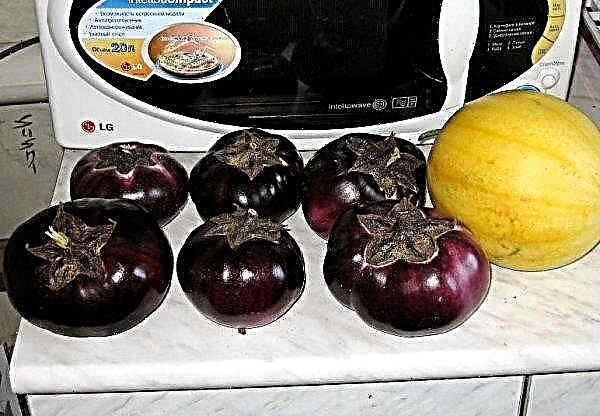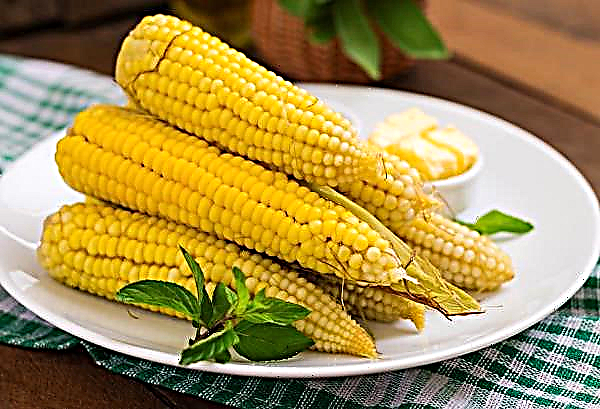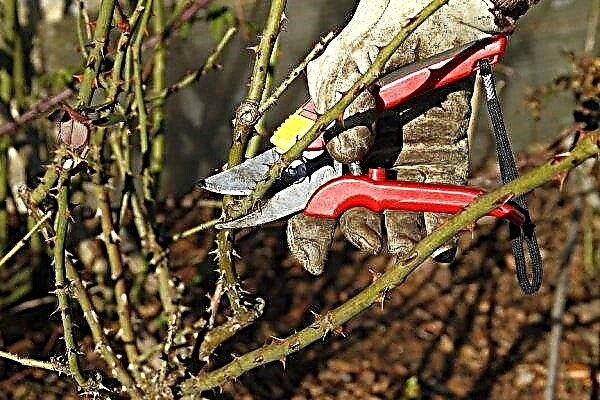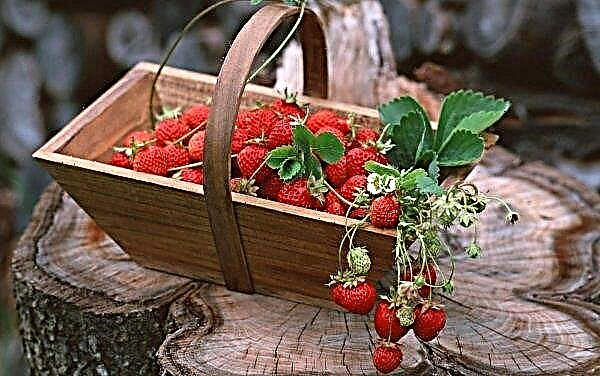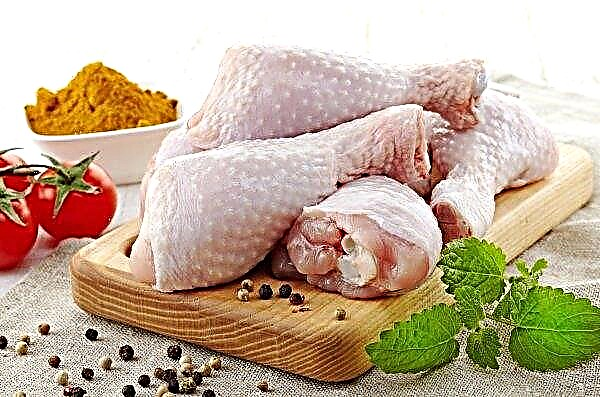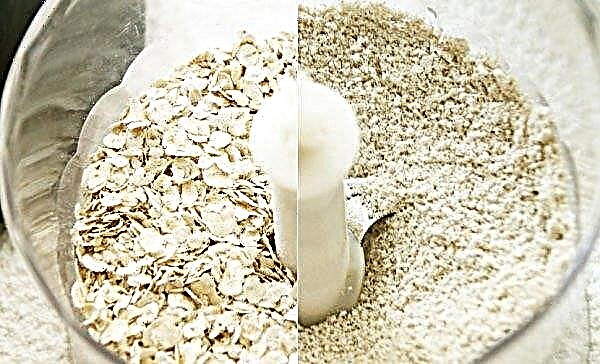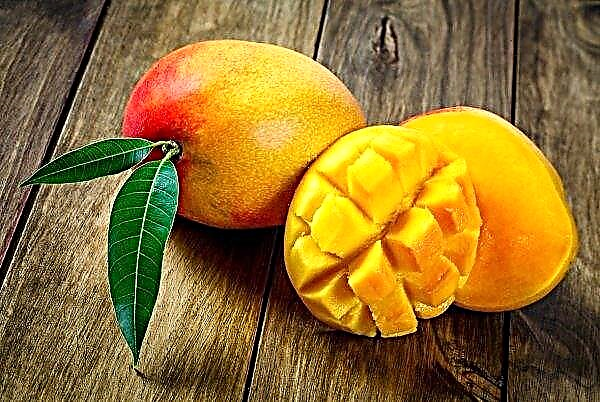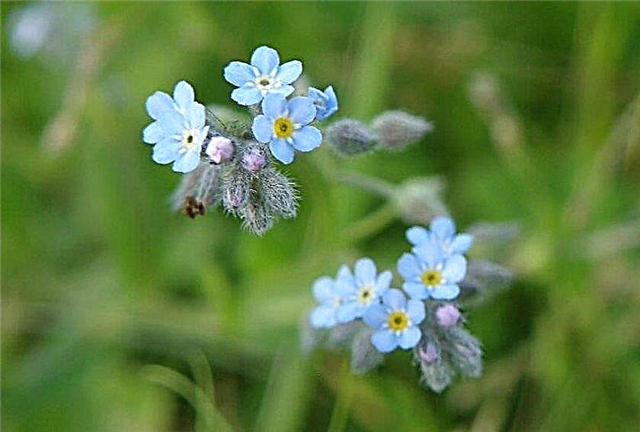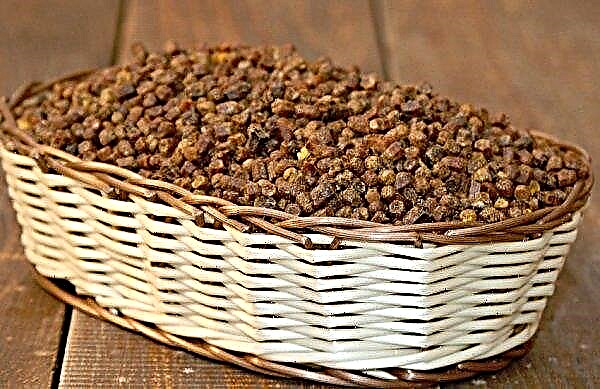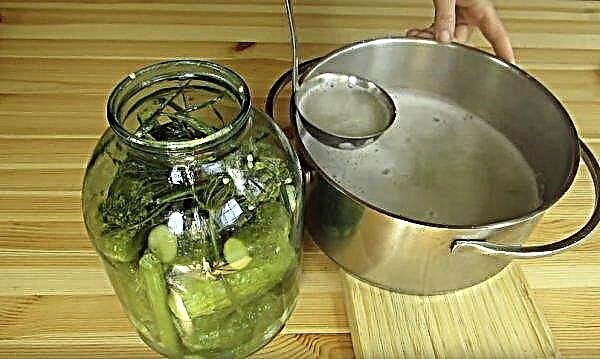Thuja folded (Thuja plicata) grows along the entire Pacific coast. This species belongs to the largest tree in the Cypress family - the western red cedar. But less tall coniferous shrubs also belong to it. For example, thuja vipkord. This is a dwarf shrub that is widely used for decorating the landscape. Culture is distinguished by endurance and unpretentiousness to growing conditions. You will find a detailed description of the plant later in the material.
Grade description
Whipcord (Wypcord) appeared as a random seedling mutation at the Drakes Crossing nursery in Silverton, Oregon, in 1986. It was introduced by Barbara Hupp in 1999, but was not patented. This nursery sells small lots of various unusual seedlings that can decorate your site so that you can enjoy your garden not only in summer but also in winter.

Thuja Vipkord is a shrub form that grows very slowly, has an interesting hanging needles, reminiscent of ropes. It is easy to recognize by its appearance. The shrub is a flattened hill and at a young age does not exceed 60 cm in height and 90 cm in diameter. Due to the size of the thuja, it always looks like a rounded ball growing from the soil.
Grade Features:
| Family | Cupressaceae |
| A type | evergreen shrub |
| Characteristic | frostproof, windproof |
| Maximum height | 1,5 m |
| Maximum width | 1,5 m |
| Growth rate | slow |
| The form | spherical |
| Form factor | dwarf |
| Root system | small, located in the upper layers of the soil |
| Needles | adjacent to the shoot, scaly, shiny, green |
| Flowering time | does not bloom |
| Lighting | full sun |
| Irrigation | moderate |
| Winter hardiness zone | 3–7 |
| The soil | any fertile |
It grows best on moist, fertile, well-drained soils in full sunlight. It adapts pretty well and adapts well in cool climates. Intolerant of drought, therefore, needs regular watering.
Landscape use
Thuja is the classic plant choice for creating hedges or decorating the space in front of the building. To this end, it is used in landscape design around the world. But given the fact that Vipkord is a shrub, it is better to use it as an interesting little accent in rock gardens or to create low decorative borders of various garden areas with it.
The plant lends itself to shearing. It can be given a special shape of a ball, cone, so Vipkord is in demand in the form of a topiary. But we must remember that it is impossible to give an adult plant a topiary shape. They do this only with a seedling of 2–4 years of age, and then simply maintain the contours of the figure. A topiary haircut is performed during the growing season - from May to September. If this is not done, then the plant will return to its natural form.Did you know? The epithet "tree of life" in relation to the thuja was first used by the Frenchman Jacques Cartier in 1535 during an expedition along the St. Lawrence River. The Huron Indians taught his team how to make vitamin C rich tea from thuja bark and needles, thereby stopping the outbreak of scurvy.

In summer, the Vipkord needles are green, and in the cool season it darkens and can acquire a brown tint. Due to the characteristic shape of the branches — long and drooping, this species of thuja will be an excellent find if you create a Rain Garden - a new type of landscape design. The main structure in it is a catchment basin into which rain water flows. But around it plants are planted with a characteristic, as if flowing, like a waterfall, appearance.
Did you know? The term "Thuja" is of Greek origin. It means wood with an aromatic effect.
How to breed
Thuja can breed:
- cuttings;
- seeds.

Cuttings are obtained with the growth of the new season. Older people will have less chance of rooting. They are best rooted in the warm season, therefore it is better to plant them in the spring. Small branches with a length of not more than 30 cm are cut from the parent plant. For 12 hours, their lower part is soaked in a growth stimulator, and then planted in prepared soil.
Seed collection is carried out in the fall from September to December. To do this, female cones are cut and laid out to dry in a dry room with an air temperature not exceeding +6 ... + 7 ° С. When they dry, each cone is opened and seeds are extracted from it. They are placed in a bag filled with wet peat moss, and cooled on the vegetable shelf of the refrigerator until spring, and then germinated.
Did you know? Thuja alcohol tincture is used to treat inflammatory processes, including cystitis, prostatitis. The drug is taken 3 times a day in the amount of 5 drops per glass of water.
Landing
When planting cuttings you will need:
- Prepare a mixture of peat, coarse sand or vermiculite, taken in equal parts.
- Dip the cuttings into the growth stimulator. It can be "Kornevin" or another drug. The exposure time should be in accordance with the instructions on the package.
- Pour the prepared soil mixture into the pots.
- Plant cuttings in it. A pot with a diameter of 15 cm includes 6–7 cuttings. They must be installed strictly upright.
- Thue needs a warm room with plenty of sunlight. The rooting process will last about 3 months.
- Periodically, it is necessary to moisten the soil from a spray bottle or watering can.
 When planting seeds:
When planting seeds:
- Remove the seeds from the refrigerator.
- Fill the container with a starting mixture consisting of three parts of peat moss, one part of thin bark and one part of vermiculite or perlite.
- Sow the seeds into it and sprinkle on top with a layer of sand 1-2 cm thick.
- For successful germination, an air temperature of + 12 ° C to + 15 ° C is required.
- The mixture in which the seeds are planted must be constantly moist, but not moist.
- To show seedlings, it will take 6-8 weeks of seed development.
During the first year of development, the size of the seedlings will not be too large. At three years old, they must be dived. And Vipkord seedlings can be planted in a permanent place at 4-5 years.
Before planting a young thaw in the open air, you need to adapt it to the climate. To do this, a container with seedlings is daily taken out for a couple of hours in the open air. The place must be protected from gusts of wind and rain. It will take about a week to harden, if every day increase the time spent in the air by 1 hour.
Selection and preparation of a landing site
Thuja can grow in partial shade. But it will be better if you pick up a sunny area. As for the soil, then it can be any. Rocky is also suitable. However, the crop will develop best in well-drained, neutral or slightly alkaline soil with an acidity level of 6.8–7.2 pH.
Important! Please note that Whippord — this is not a thuja variety, but a mutation, so when growing from seeds, the probability of getting exactly the same plant as the one from which the cones are collected does not exceed 50%.
The soil can be slightly acidified by applying compost or rotted manure before planting. You need to keep the soil moist and loose. This effect is provided by a layer of mulch. It protects moisture from evaporation, and the soil from compression.
Landing rules
The best time for planting is early spring. At this time, conditions have already been created in the soil so that the roots can develop. But the air temperature does not contribute to the beginning of the growing season, so the thuja can concentrate all its forces on rooting.
Thuja landing step by step:
- Select a sunny area with drained soil.
- Remove weeds from the planting zone. Dig the soil to a depth of 0.3–0.5 m.
- Dig a hole 2 times the diameter of the root layer.
- If necessary, create a drainage layer of pebbles or gravel in it. Layer thickness - 15 cm. If the soil is not fertile enough, mix the removed soil with a bucket of compost.
- Place a part of the soil mixed with compost on the drainage layer or on the bottom of the pit.
- Remove the thuja from the container in which it came from the nursery. Inspect the roots. If necessary, unravel them so that it is convenient for them to develop the surrounding soil.
- Set the seedling in the center of the pit.
- Fill the pit with soil. Make sure that the thuja is planted 3-4 cm higher than it grew in the nursery.
- Make a small mound of soil around the tree to make it easy to water.
- Pour seedlings abundantly. In the future, continue to water once a week.

Further care
Shrub care will consist of:
- regular watering;
- loosening the soil and removing weeds after watering;
- periodic fertilizer application;
- sanitary pruning;
- processing wood from pests and diseases;
- preparing the plant for wintering if necessary.
Did you know? In the natural environment, thuja provides nesting and sheltering places for small birds and animals. Her buds, seeds and twigs —great source of food for them.
Watering and feeding
Thuja does not require special attention. But watering should be carried out every 3-5 days, since Vipkord is extremely sensitive to drying out of the soil, so irrigation is organized as the soil dries to a depth of 5-7 cm. After the end of the growing season in winter, thuja can not be watered. If it rains, then additional watering is also not needed.
Fertilizers are introduced in early spring. It is advisable to place 5 kg of compost under each plant. But if it is not, replace the purchased balanced fertilizer. If your Wipcord looks green, grows well, and generally looks prosperous, then you don’t need to fertilize so as not to overfeed the thaw.
Soil cultivation and mulching
If necessary, lay a layer of mulch in the root zone to protect the roots from drying out, freezing or overheating, as well as to suppress weeds. It can be pine needles, sawdust, chopped straw.
Its thickness should be 5-15 cm. But it is laid at a distance of at least 6 cm from the trunk, otherwise wet mulch will contribute to the decay of the plant.

Pruning
Thuja does not forgive the wrong haircuts, so do not cut the bush without need. If there are dry branches, then they are pruned at a time when the plant is in a dormant period, i.e., in winter. Before cutting, the tool must be disinfected so as not to transfer microorganisms from one tree to another.
Important! All species of thuja have one thing in common: they do not form new buds on an old tree. This means that if the branch looks bare or dry, then it must be cut off.
Shelter for the winter
Thuja tolerates frosts well, therefore, in regions with mild winters, special shelter is not necessary. But if your frosts fall below -20 ° C, then Vipkord can be covered with several layers of burlap or spunbond for the period of frosts.
Pay attention to a number of features. If the weather is warm, the air temperature under the film coating will be higher than on the street. At night, the air will cool, forming condensate. As a result, mold appears, which is harmful to the plant, so shelter is needed only when there are frosts. Do not store it at positive temperatures.
Cultivation of decorative thuja at home is quite possible. This is a very unpretentious plant, easy to maintain and unpretentious to the climate. In addition, Vipkord does not take up much space, so if you wish, it can be dropped off on the site.

